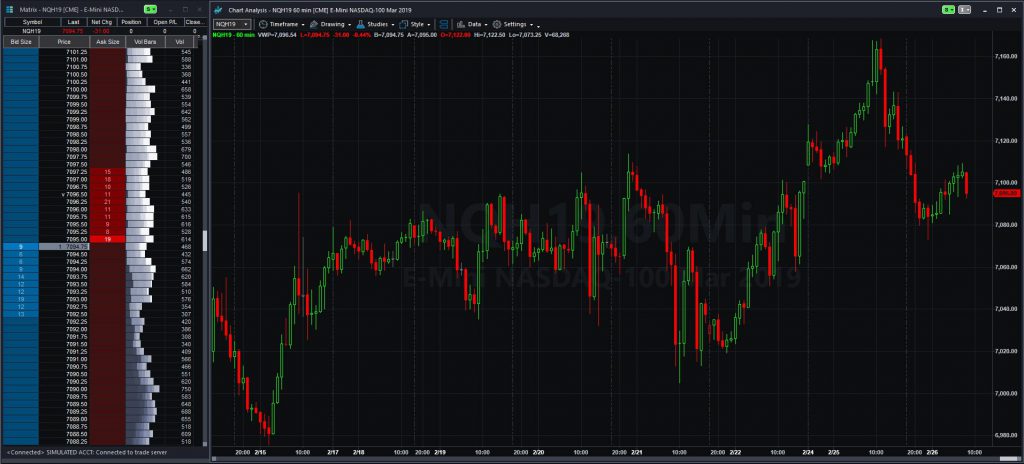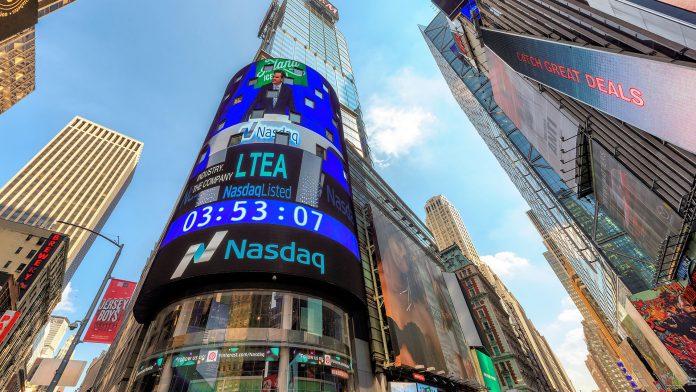The “Nasdaq.” Few words better represent the most innovative parts of the economy. Did you know the entire Nasdaq market can be traded virtually any time with CME’s Nasdaq-100 futures?
Like CME’s S&P 500 E-minis, Nasdaq futures are active from Sunday night through Friday afternoon. Clients can go long to track rallies or short to play the downside. While the basic principles are the same, the Nasdaq stands out because it’s so heavily focused on technology.
The S&P 500 has broad exposure to many sectors, none of which account for more than one-quarter of the weighting. It’s also got plenty of financials, health-care names and industrials.
Heavy Focus on Technology
Not so for the Nasdaq-100. Technology stocks including Microsoft (MSFT) and Apple (AAPL) account for more than 40 percent of its market capitalization. It’s actually higher than that because others widely viewed as techs are officially members of other sectors.
For example, Alphabet (GOOGL+GOOG) and Netflix (NFLX), which together represent another 10 percent of the Nasdaq-100, belong to the newly created communications sector. Amazon.com (AMZN) and Booking (BKNG) — technically consumer discretionary stocks — constitute another 10 percent of the index.
The tech focus doesn’t stop there. Dig a little deeper and you get biotechnology names like Amgen (AMGN) and Gilead (GILD). Those, plus robotics company Intuitive Surgical (ISRG), add up to another 6 percent of the Nasdaq.
All told, more than two-thirds of the Nasdaq-100 has something to do with technology and innovation. If you’re looking for the future in a single trade, few instruments likely cover those bases better than the Nasdaq-100.
Costco, Starbucks Round Out the Holdings
The biggest non-technology companies, by the way, are Costco (COST) and Starbucks (SBUX). Both account for a little over 1 percent of the index.
Nasdaq-100 E-mini futures have the root “NQ” and use the same quarterly expiration cycle as the S&P 500 E-minis. The current contract (NQH19) expires March 15, although traders will roll to June (NQM19) in the preceding week.

CME Nasdaq-100 E-minis current contract, with Matrix and hourly chart
Like other major futures, TradeStation provides a “continuous” contract for charting purposes using an “at” sign. So for the Nasdaq-100, it’s @NQ.
While it’s similar to S&P 500 E-minis (@ES), @NQ has different specifications. Here’s a breakdown:
- What it tracks: Nasdaq-100 stock index.
- How it tracks it: $20 per point, per contract, up or down.
- When it trades: Sunday at 6 p.m. ET through Friday at 5 p.m. ET. Each day during the week it halts 4:15-4:30 p.m. ET and 5-6 p.m. ET.
- Capital required during the normal session: $2,090 to enter, $1,900 to hold. (Subject to change.) This is based on the $8,360 initial margin requirement and the $7,600 maintenance margin.
- Expirations: Third Friday of March, June, September, December.






















